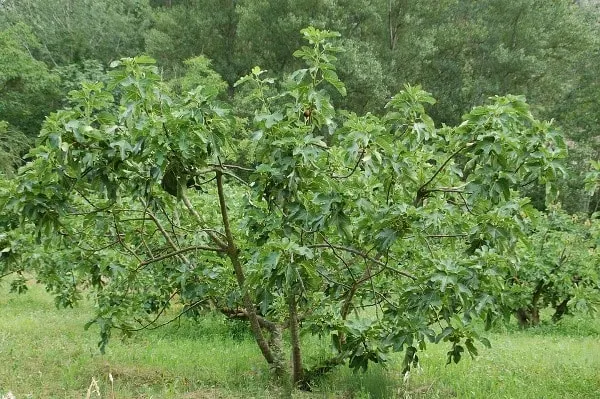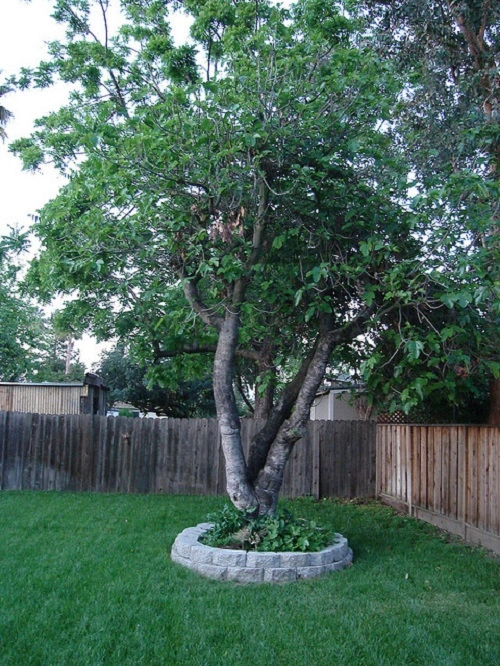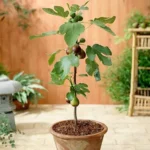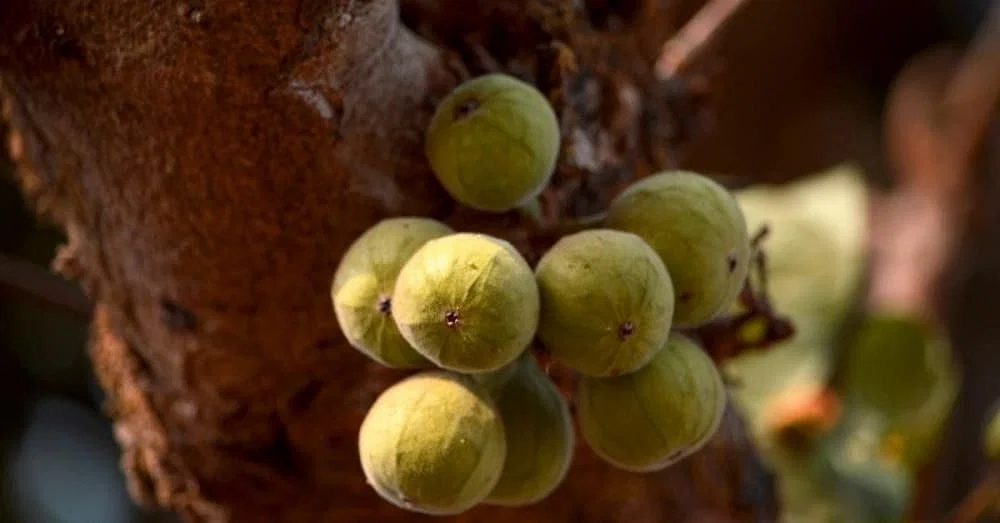Introduction
Welcome to your ultimate guide on planting an Anjeer tree in India! If you’re a gardening enthusiast or simply looking to add a fruitful and beautiful tree to your backyard, Anjeer, also known as the fig tree (scientifically named Ficus carica), is an excellent choice. This comprehensive guide will take you through all the steps needed to ensure successful planting and abundant harvests. So, let’s dive in and discover the wonders of cultivating this delightful fruit tree!
Table of Contents

1. Understanding Anjeer Trees
What is Anjeer?
Anjeer, or Ficus carica, is a deciduous tree native to the Middle East and Indian sub-continent. It belongs to the mulberry family and is renowned for its sweet and delicious fruit, also known as figs. The Anjeer tree in India holds deep-rooted cultural significance. Anjeer is a powerhouse of essential nutrients, making it a valuable addition to a balanced diet. The fruit is an excellent source of dietary fiber, vitamins, and minerals, including potassium, calcium, iron, and magnesium. Know more about Anjeer tree’s health benefits from here.
Types of Anjeer Trees
There are several varieties of Anjeer trees available, each offering unique flavors and characteristics. Some popular types include Brown Turkey, Black Mission, Kadota, and Calimyrna. More about Anjeer tree type.
2. Selecting the Right Location

Sunlight Requirements
Anjeer tree in India thrive in full sun with well-drained soil. Choose a location in the garden that receives at least 6 – 8 hours of sun per day. Remember that the area is protected from strong winds, as they can damage young shoots and leaves.
Soil Conditions
Plan the planting zone by extricating the soil to a bottom of around 12 inches. Mix the soil in organic compost or manure to improve soil fertility. proper use of compost or well-rotted manure also improves drainage. Anjeer trees prefer slightly alkaline soil with a pH between 6.0 and 6.5. Apply a layer of organic mulch around the tree to retain soil moisture and suppress weed growth.
Climate Considerations
Anjeer trees in India flourish in a Mediterranean climate with warm summers and mild winters. They can also grow in temperate regions if protected from frost.
3. Planting Your Anjeer Tree in India
Choosing the Right Time
The best time to plant an Anjeer tree in India is in the late winter or early spring when the soil is moist, and the tree can establish its roots before the growing season.
Digging the Hole
Dig a hole twice the size of the root ball and loosen the soil at the bottom for better root penetration.
Planting Depth
Place the tree in the center of the hole at the same depth it was in the nursery container. Ensure that the top of the root ball is level with the ground.
Backfilling and Watering
Fill the hole with soil and water thoroughly to settle the soil and remove air pockets.
4. Caring for Your Anjeer Tree

Watering
Water the newly planted Anjeer tree regularly, especially during the hot summer months. Once established, they are relatively drought-tolerant, but consistent watering is vital during fruit development.
Fertilization
Anjeer trees benefit from balanced fertilization. Use a balanced fertilizer in the spring and late summer. Apply a well-balanced fertilizer in the spring and again in late summer. Avoid excessive use of nitrogen, as it can lead to excessive leaf growth at the expense of fruit production.
Pruning
Prune the tree during the dormant season to remove dead or diseased branches. Pruning is essential to maintain the shape and size of the tree, as well as to improve air circulation and sunlight penetration. Prune during the dormant winter season to remove dead or diseased branches. Train the young tree to develop a sturdy and balanced structure.
Pest and Disease Management
Anjeer trees in India are prone to pests like aphids, scale insects, spider mites, and root rot. Apply appropriate organic remedies to prevent infestations. Keep a close eye on your Anjeer tree for signs of pests or diseases. Use natural remedies or environmentally friendly pesticides to tackle these problems.
5. Harvesting and Enjoying Your Anjeer
Recognizing Ripeness
Figs are ready for harvest when they change color and feel soft to the touch. Ripe figs should be slightly drooping.
Harvesting Tips
Gently twist the figs to avoid damaging the tree or fruit. Use a basket or container to collect the harvest.
Conclusion
Planting an Anjeer tree in India not only adds natural beauty to your surroundings but also brings forth a myriad of benefits. From its cultural significance to its nutritional value and medicinal properties, the Anjeer tree in India is a treasure worth preserving. By following this guide and dedicating care and attention, you can witness the growth of a flourishing Anjeer tree and savor the delightful fruits it bears.
FAQs (Frequently Asked Questions)
How often should I water my Anjeer tree?
Water your Anjeer tree regularly, about 2-3 times a week, especially during dry spells.
Can I grow Anjeer trees in pots?

Yes, Anjeer trees can be grown in large containers, but ensure proper drainage and regular fertilization.
Do Anjeer trees attract pests?
While Anjeer trees can attract pests like aphids and scale insects, proper care and organic remedies can keep infestations at bay.
When is the best time to harvest figs?
Figs should be harvested when they are fully ripe, usually in late summer to early fall.
How do I store freshly picked figs?
Store freshly picked figs in the refrigerator for up to 2-3 days or dry them to extend their shelf life.
Can I grow Anjeer trees in containers?
Yes, you can grow Anjeer trees in large containers. Ensure proper drainage and provide adequate space for the tree’s root system to grow.
Can I consume Anjeer leaves for their medicinal properties?
Anjeer leaves have some medicinal uses in traditional practices, but it is crucial to consult an expert before using them for medicinal purposes. Anjeer tree in India, In Hindu mythology, the tree is associated with various deities, symbolizing fertility, prosperity, and knowledge.
Is it possible to propagate Anjeer trees from cuttings?
Yes, Anjeer trees can be propagated from hardwood cuttings taken during the dormant season.
Do Anjeer trees attract birds and wildlife?
Anjeer trees are known to attract various bird species, which aid in pollination and contribute to the tree’s ecological role.



